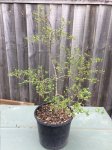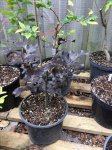Mellow Mullet
Masterpiece
It might be hard to discern but if you realize just how much resources are put into flowering it's stands to reason that you will weaken a tree by letting it flower after a root prune. Even without a root prune azaleas take some time to recover from flowering.
It is not hard to discern at all, I don't think that they use as much energy as everyone thinks they do to make flowers and I am really not sure that there is a way to measure it anyway. I have read that flowers are nothing more that specialized leaves anyway.
I am reporting my experience, I have repotted and not removed the buds for years and have not lost a tree from it. I also allow them to bloom every year with no discernible weakening, azaleas grow like weeds. Just saying, removing the buds serves no purpose as far as growth goes. Seen it, done it.


